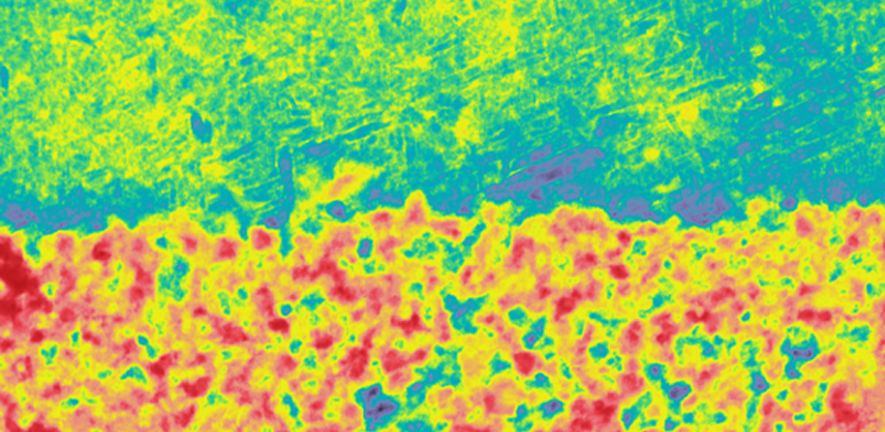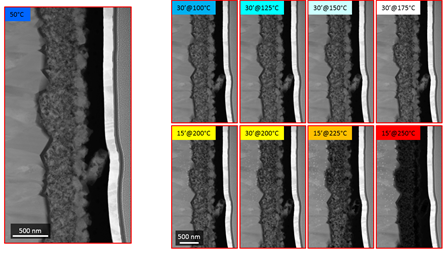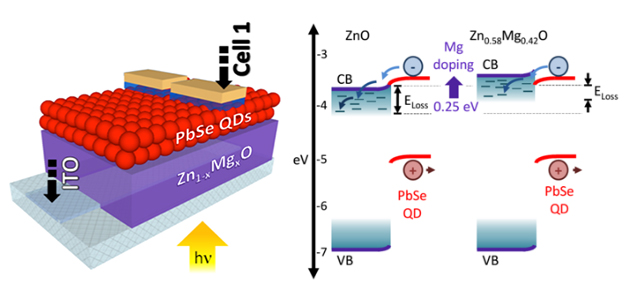
Banner image: Colour rendered HAADF STEM image of a hybrid organic-inorganic perovskite solar cell, showing the porous alumina layer infiltrated and coated with the nanocrystalline perovskite.
Morphology and composition, both at the nano- and the micro-scale, determine the behaviour of materials used in energy harvesting and energy storage devices, such as thin film solar cells and batteries. We use scanning and transmission electron microscopy (SEM/TEM), in combination with focused ion beam (FIB) milling, to investigate these properties at different length scales.

Figure caption: a) HAADF STEM images for a large area fresh cell and b) for a cell after 200h of light soaking. (c) Calculated atomic ratio maps for iodine/lead in the fresh and (d) stressed cells obtained from energy dispersive X-ray spectroscopy (EDX).
We are interested in developing new techniques that allow the study of working devices inside the electron microscope. We aim at capturing the nanoscale morphology and crystallography of the electrodes, as well as their composition and electronic structure, both in the ground state and under realistic working conditions, and to monitor their evolution as a function of time

Figure caption: Example of a study of the effect of heating on a hybrid perovskite solar cell, performed in the transmission electron microscope, showing chemical decomposition and ionic migration of active components at high temperatures.
Other areas of interest are oxides in photovoltaics and developing nanostructured epitaxial materials with improved performance for solid electrolytes for SOFC/ solid state batteries. For the solar area, we work on n-type and p-type electrodes based on oxides and also on new absorber materials. For the electrolyte area, we have developed materials with 2x increased ionic conductivities in nanostructured composites and are interested to adopt these methodologies to solid state electrochemical systems, in general.

Figure caption: Bandgap engineering of Zn1-xMgxO n-type layer using with QDs to give record Voc.
In addition we undertake applied research towards development of fully superconducting motors and generators benefiting energy generation and transport sector. Composite superconducting magnets in the form of stacks of high temperature superconducting tape are being developed for implementation into motors. The power of a motor is proportional the field generated by rotor permanent magnets. Significantly increasing this field increases the power to weight ratio which is attractive for future electric aircraft. The magnets being developed are being implemented as rotor field poles for a 1 MW superconducting motor in the EU project ASuMED, Advanced Superconducting Motor Experimental demonstrator (www.asumed.oswald.de).
